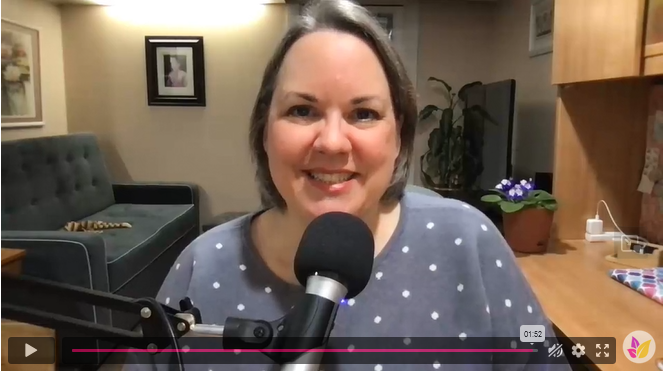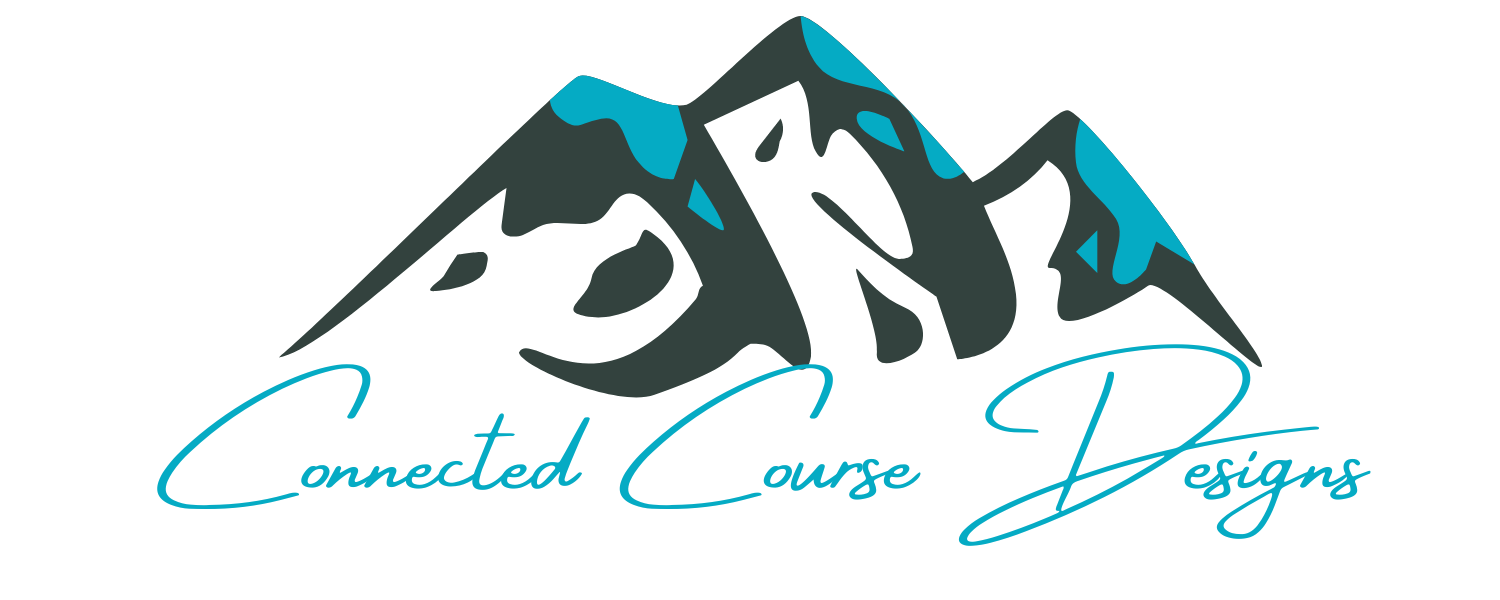
Cindy Bidar's Tiny Course Empire welcome video
The first onscreen component of an online business course I took recently was a prominent video with an obvious play button. Within 5 seconds of starting the video, I was welcomed to the course and introduced to the creator.
The course author, Cindy Bidar, created this course orientation video that not only warmly introduced me to her as she talks directly into the camera, it provided all the key course information I needed to be successful. And, she did it in under 2 minutes.
As an online course creator, you already know that learners can get overwhelmed just trying to access a course, much less navigating it.
Once a learner has access, they are presented with various course components - lesson navigation links, resource links, information blocks, and possibly a comment section. It can quickly become overwhelming, and learners might not ever start the course.
In fact, statistics range from an average as low as 3 – 15% for online course completion – with many courses never even being started.
When learners complete one of your courses, they will be ready to purchase your next course. And, because you care about making a positive difference in your followers’ journeys, you want to do everything you can to help them succeed; when they succeed, you succeed. Getting them off and running with a warm welcome and solid orientation will help do just that.
Cindy’s Tiny Course Empire course has many shining examples of well-done course design principles.
Components of a course orientation
Cindy’s Tiny Course Empire course has many shining examples of well-done course design principles I teach at Connected Course Designs, and today, we are looking at her course orientation.
Let’s review both the format and the components.
Video format welcome
Cindy uses a basic video set up where she talks to you from her home office. Technically, the setting and video quality are both clear and clean with excellent sound quality, yet she includes no fancy intro sequence, no background music, no animations. It’s just Cindy talking to you, and that works really well.
In fact, it might even be better received than a super-slick, highly-produced video. Research shows we find people more relatable in less-produced videos, and when connecting with your followers is an important part of your business, this matters.
The format for your welcome doesn’t need to be complicated. It can even just be written out; however, letting people see you on camera goes a long way to making a positive connection with them.
Because the content of Cindy’s course lessons is presented as voiceover of course slides, it is especially nice to put a face to the voice with an introductory video.

Cindy Bidar welcomes learners to her Tiny Course Empire course (Photo Credit: Screenshot from Cindy's orientation video)
Orientation components
The content of the orientation piece is important as well. Let’s take a look at what Cindy includes in the Tiny Course Empire welcome.
Lesson overview: Number, type, location, and links
Cindy lets you know how many lessons exist in the course (7), that each lesson has one video as well as additional resources, and where to find the links for each lesson.
Lesson order
When presented with a list of lessons, learners often aren’t sure where to start even when they are numbered. Cindy addresses this head on letting learners know that while they can be completed in any order, she recommends starting at Lesson 1 and continuing sequentially to get the best results.
Lesson resources
Cindy knows that including resources for learners to apply what they are learning as they are learning it is critical to learner success.
In this course, she provides checklists, worksheets, MP3 files for those who prefer to listen on the go, and done-for-you Trello boards.
Because learners can get overwhelmed with so many different types of resources, Cindy provides an overview of what to expect in each lesson and their location. She also provides transcripts which can be easier for some learners to follow than audio and/or video.
Additionally, in the lessons themselves, she not only clearly names the resource such as “Course Creation Tracker” and “Lesson Audio,” she also clearly labels the format of the resource. The tracker has a PDF file label, and the audio has an MP3 file label. This goes a long way in helping learners understand the resources available to them and makes them more likely to take advantage of them.
Specific course advice
One of the many reasons people purchase and take online courses is the curation and organization of the content. Much (maybe even most) of the information in any online course can often be freely found on the Internet, but it’s having someone we trust guide us through the content that provides the connection and assurance we need to know we are on the right path.
Cindy has seen a lot of learners go through her courses, and she knows the importance of applying what you are learning as you learn it, so she emphasizes that point saying, “Here’s where I want to caution you, though. It’s really not enough for you to just watch the videos or listen to the audio while you are busy doing something else. You have to actually do the work. Print out the worksheets and fill them in. Do the brainstorming and the market research. Copy the Trello Boards into your account and start using them.”
Not only is this valuable advice, it lets you know that Cindy cares that you succeed.
Course support: content and technical
Other pitfalls that can cause learners to just give up on a course are technical issues and/or confusion over the content.
Cindy outlines exactly how to get personal responses from her for any content questions learners have as well as how to get the most efficient assistance for any technical issues.
Even if a learner never needs these support systems, knowing they are available gives learners the confidence to jump into the courses, making them more likely to be successful. They know the safety nets are in place.
Course objectives
Naturally, we want learners to know what their summit goal or goals are for the course. Cindy doesn’t talk about those in the welcome video, but they are prominently displayed in writing just below the welcome video and the page is titled “Course Objectives.”
The objectives are clear and concise as all course goals should be:
- Create a catalog of small, low-cost courses your customers will love.
- Leverage your course catalog in a variety of ways to continue to earn and grow for years to come.
- Develop a course creation schedule that will never leave you feeling overwhelmed or stressed out.
- Automate and systemize your course creation tasks so you can work fewer hours.
Encouragement and connection
As learners, we can feel intimidated or insecure, especially as we are starting out with a program. A little warm encouragement goes a long way. Cindy concludes with “Enjoy the course, and I can’t wait to see you build your tiny course empire! Have a great day!” These seemingly simple two sentences of well-wishes let you know that she not only wants you to succeed but encourages you to share your success with her. She wants that connection with you as part of her community.
Community and connection
When your learners feel connected and part of your business’ community, they are more likely to engage both with you and your content, creating a better environment for success.
Providing a strong orientation to your courses with a welcome video is a great way to get them off to the best start.
Course Orientation Checklist
A quality course orientation should include mentioning these components:

Cindy Bidar
Tiny Course Empire
You can get more information on Cindy Bidar’s Tiny Course Empire course using my affiliate link.
If you are interested in exploring Cindy’s entire library of bite-sized course for free, use this Six-Figure Systems One-Week Trial link.
Please review my Affiliate Disclaimer.

